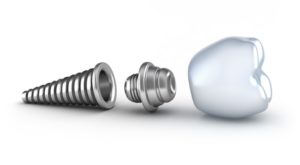How do I know if I am a suitable candidate for dental implants?


Because they are made of titanium, dental implants are able to fuse with the jaw, and this technology is the foundation of the devices’ durability.
On the other hand, the process of osseointegration requires that the patient have adequate bone tissue in order for the oral surgeon to place the dental implants. This can present an obstacle for patients who were initially fitted with other appliances, like bridges or dentures, and wore those devices for some time.
The jawbone erodes if an absent tooth’s root is not replaced along with the crown. Dental implants serve as a root-like structure, whereas bridges and dentures do not replicate any part of the tooth’s structure below the gumline. Therefore, patients who choose bridges or dentures will continue to lose bone mass from the jaw.
Patients with extensive bone loss may not be appropriate candidates for considering dental implants if there is not enough bone to support osseointegration. If patients move forward with dental implants in such situations, the risk of implant failure is high.
Bone loss does not permanently rule out dental implants for a patient, though. A bone graft may provide enough supplemental bone material at the implant site to support the implant.
Each patient must be evaluated on a case by case basis to determine if dental implants will be effective. Your oral surgeon will examine your jaw and remaining teeth extensively and rely on imaging for an interior view of the bone structures to determine if you have good chances of success with dental implants.
If you have poor bone quality, the oral surgeon may recommend a preliminary bone graft to increase the likelihood of good outcomes following dental implant placement.
To find out if you are a candidate for dental implants, contact our experienced team of oral surgeons at Great River OMS. Call 563-557-1440 to schedule your professional consultation today.